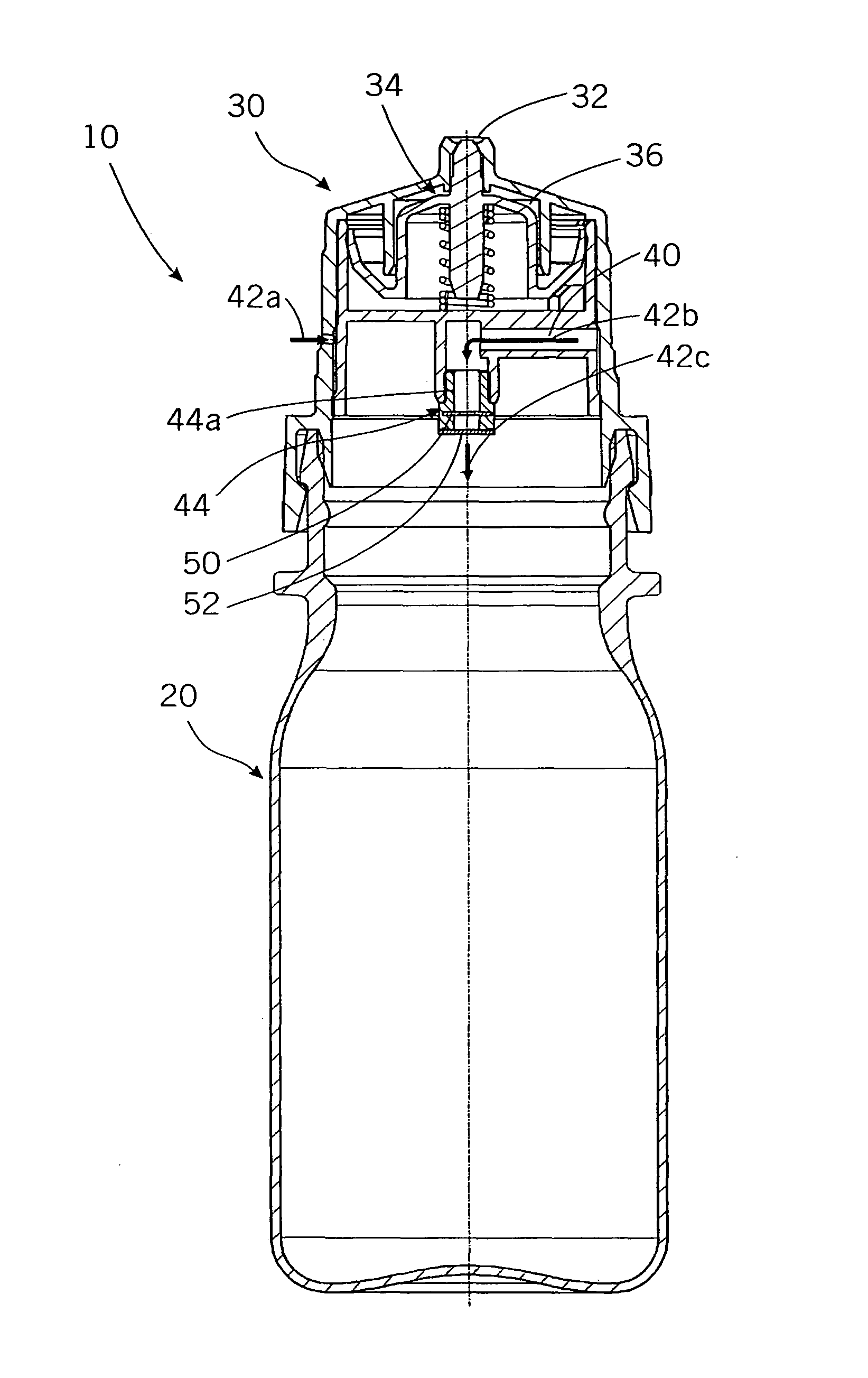Dispensing device
a technology of a dispenser and a pore size, which is applied in the direction of packaging foodstuffs, packaging goods, separation processes, etc., can solve the problems of high surface, increased pore size, and inability to compensate for the medium which has been dispensed
- Summary
- Abstract
- Description
- Claims
- Application Information
AI Technical Summary
Benefits of technology
Problems solved by technology
Method used
Image
Examples
first embodiment
[0020]FIG. 1 shows a sectional side view of a dispensing device according to the invention, and
second embodiment
[0021]FIGS. 2a and 2b show two sectional side views of a dispensing device according to the invention.
[0022]FIG. 1 illustrates a dispensing device 10 which has a bottle-like medium reservoir 20 and a metering head 30 latched thereon.
[0023]The metering head 30 contains an outlet opening 32 which is closed by a valve 34 until the pressure in the medium in a valve chamber 36 connected to the medium reservoir has reached a predetermined level. As soon as this is the case, the valve 34 is pushed open by the liquid pressure, counter to a spring force, and the dispensing operation begins. In the case of the dispensing device 10 illustrated, provision is made for this device to be held, during the dispensing operation, such that the outlet opening 32 is oriented downward.
[0024]In the case of the dispensing device illustrated, the medium in the medium reservoir 20 is subjected to pressure by the medium reservoir 20 being compressed manually. The medium reservoir 20 is connected to the valve ...
PUM
| Property | Measurement | Unit |
|---|---|---|
| pore size | aaaaa | aaaaa |
| pore size | aaaaa | aaaaa |
| length | aaaaa | aaaaa |
Abstract
Description
Claims
Application Information
 Login to View More
Login to View More - R&D
- Intellectual Property
- Life Sciences
- Materials
- Tech Scout
- Unparalleled Data Quality
- Higher Quality Content
- 60% Fewer Hallucinations
Browse by: Latest US Patents, China's latest patents, Technical Efficacy Thesaurus, Application Domain, Technology Topic, Popular Technical Reports.
© 2025 PatSnap. All rights reserved.Legal|Privacy policy|Modern Slavery Act Transparency Statement|Sitemap|About US| Contact US: help@patsnap.com



